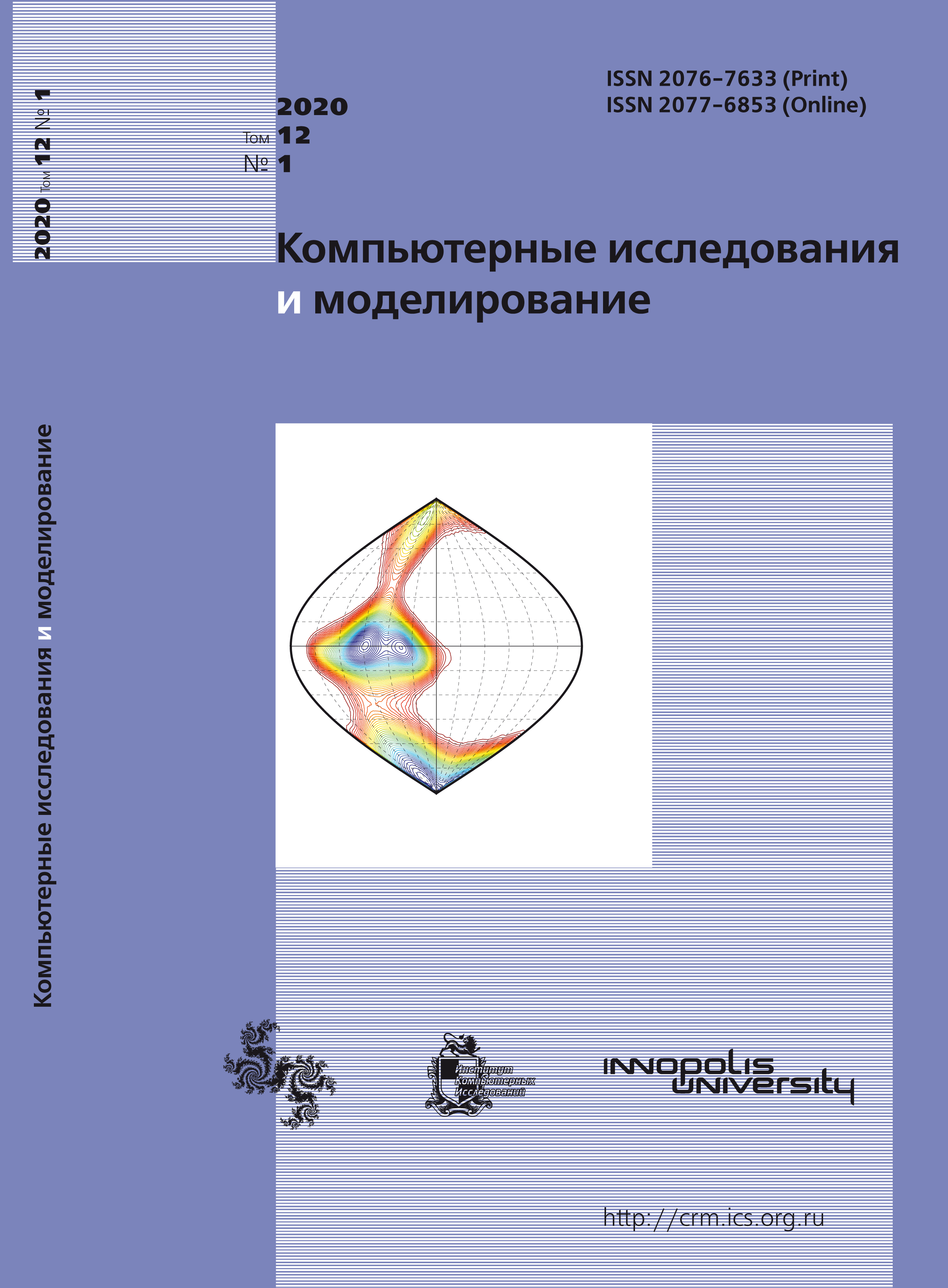All issues
- 2025 Vol. 17
- 2024 Vol. 16
- 2023 Vol. 15
- 2022 Vol. 14
- 2021 Vol. 13
- 2020 Vol. 12
- 2019 Vol. 11
- 2018 Vol. 10
- 2017 Vol. 9
- 2016 Vol. 8
- 2015 Vol. 7
- 2014 Vol. 6
- 2013 Vol. 5
- 2012 Vol. 4
- 2011 Vol. 3
- 2010 Vol. 2
- 2009 Vol. 1
Modeling the spatial scenario of the transition to chaos via torus breakup in the problem with concentration-dependent diffusion
 pdf (2873K)
pdf (2873K)
In the last decades, universal scenarios of the transition to chaos in dynamic systems have been well studied. The scenario of the transition to chaos is defined as a sequence of bifurcations that occur in the system under the variation one of the governing parameters and lead to a qualitative change in dynamics, starting from the regular mode and ending with chaotic behavior. Typical scenarios include a cascade of period doubling bifurcations (Feigenbaum scenario), the breakup of a low-dimensional torus (Ruelle–Takens scenario), and the transition to chaos through the intermittency (Pomeau–Manneville scenario). In more complicated spatially distributed dynamic systems, the complexity of dynamic behavior growing with a parameter change is closely intertwined with the formation of spatial structures. However, the question of whether the spatial and temporal axes could completely exchange roles in some scenario still remains open. In this paper, for the first time, we propose a mathematical model of convection–diffusion–reaction, in which a spatial transition to chaos through the breakup of the quasi–periodic regime is realized in the framework of the Ruelle–Takens scenario. The physical system under consideration consists of two aqueous solutions of acid (A) and base (B), initially separated in space and placed in a vertically oriented Hele–Shaw cell subject to the gravity field. When the solutions are brought into contact, the frontal neutralization reaction of the second order A + B $\to$ C begins, which is accompanied by the production of salt (C). The process is characterized by a strong dependence of the diffusion coefficients of the reagents on their concentration, which leads to the appearance of two local zones of reduced density, in which chemoconvective fluid motions develop independently. Although the layers, in which convection develops, all the time remain separated by the interlayer of motionless fluid, they can influence each other via a diffusion of reagents through this interlayer. The emerging chemoconvective structure is the modulated standing wave that gradually breaks down over time, repeating the sequence of the bifurcation chain of the Ruelle–Takens scenario. We show that during the evolution of the system one of the spatial axes, directed along the reaction front, plays the role of time, and time itself starts to play the role of a control parameter.
Copyright © 2020 Bratsun D.A.
Indexed in Scopus
Full-text version of the journal is also available on the web site of the scientific electronic library eLIBRARY.RU
The journal is included in the Russian Science Citation Index
The journal is included in the RSCI
International Interdisciplinary Conference "Mathematics. Computing. Education"






